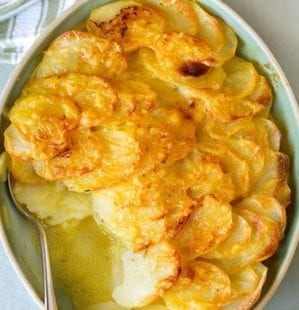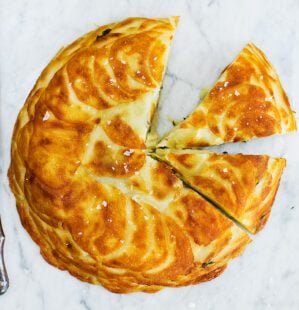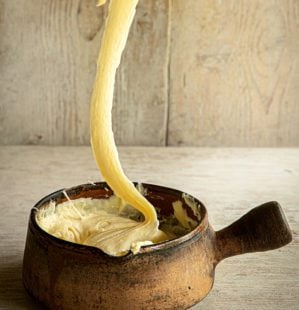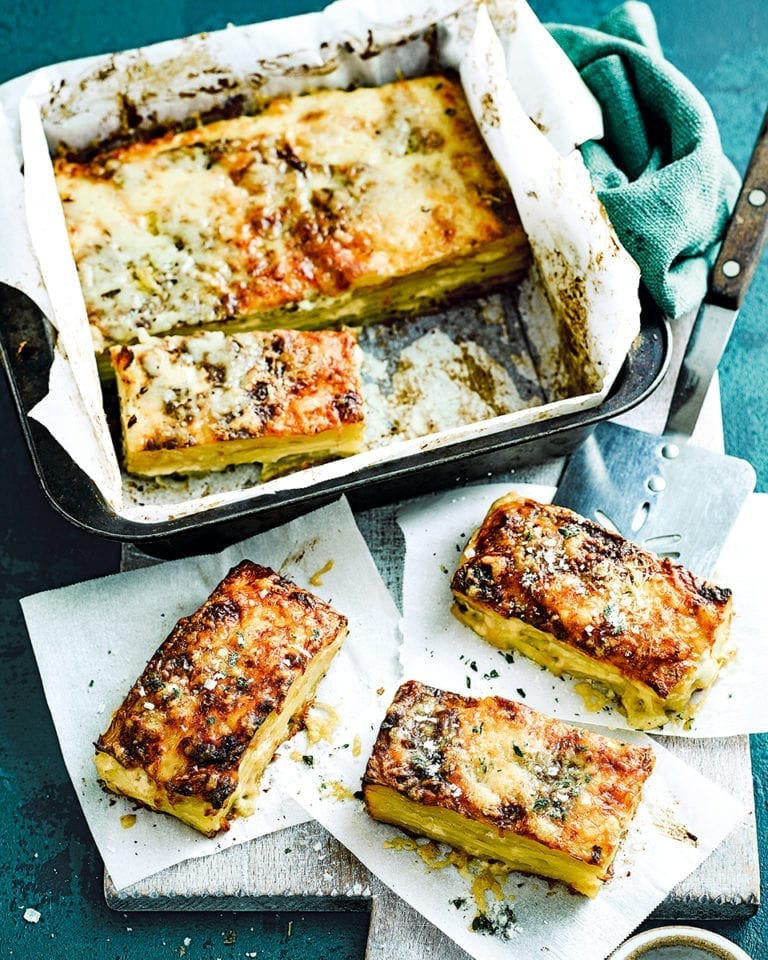Best of the best: everything you need to know to make the ultimate gratin dauphinois
Our best of the best series takes the view that if something’s worth doing, it’s worth doing right. Each month we take a deep-dive into a classic dish, delving into the processes and analysing why it tastes so good. This time, Tom Shingler takes on the dauphinois of dreams…
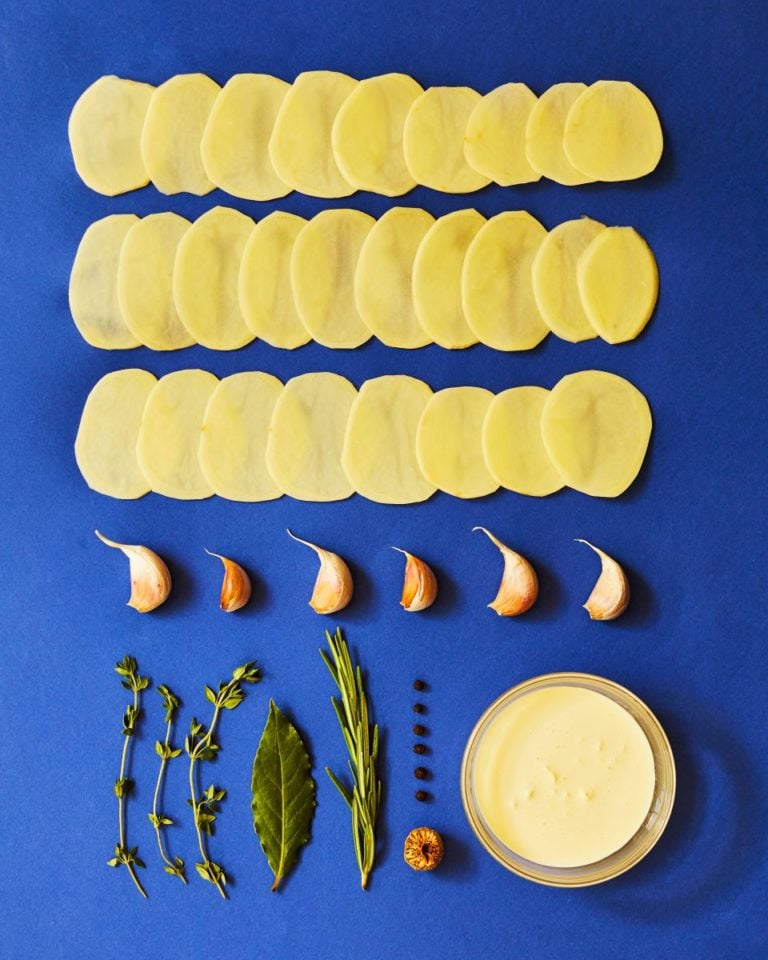
French cuisine, eh?! Cook everything in butter, cream, milk and more cream. A stereotype, sure, but in the case of gratin dauphinois, it’s pretty accurate. Thankfully, potatoes and dairy go hand in hand, providing the flavours of pure comfort food. It’s decadent, it’s luxurious, it’s not something you’d want to eat everyday – but it’s very, very delicious.
What makes a good dauphinois?
As with any dish, there’s good dauphinois and there’s bad dauphinois. For me, those which are quite wet and served swimming in split cream are bad. The firm, dense, brick-like ones with a sturdy structure and lots of layers are good. This guide will walk you through making not just a good dauphinois, but the best you’ve ever eaten.
Gratin vs dauphinois
Fancy throwing in some caramelised onions? Tempted to scatter over some breadcrumbs? Dollop of dijon mustard in the sauce maybe? Go right ahead, but you’ve just de-dauphinoised your gratin (it’s now a paltry ‘gratin de pommes de terre’). It may be semantics to you and me but it’s a much more serious differentiation to the French.
When it comes to adding cheese, it gets a little more confusing – Larousse Gastronomique includes grated gruyère in its dauphinois, and many recipes (from reputable French sources) will include comté or even (quelle horreur!) Italian parmesan. Others say cheese takes it out of dauphinois territory, but will happily throw in an egg (which helps firm it up but adds an unpleasant texture). Personally, I find dauphinois cheesy enough thanks to the caramelised cream on top, and as it’s usually served as a side to roast meats, I find any extra cheese a bit overbearing. If you are less cheese-averse, don’t go overboard – scatter a little on top rather than through the layers to maintain the light, ethereal creaminess of a good dauphinois.
Infuse the milk
Gratin dauphinois is quite bland. There’s nothing wrong with that at all – potatoes cooked slowly in plenty of cream is the best type of bland I can think of – but as already stated, to keep true to the original you can’t start throwing too much in there without it turning into a different dish altogether. What you can do, however, is infuse the milk with bucketloads of aromatics – notably garlic, woody herbs, peppercorns and nutmeg – then strain them out before it cooks. That way you’re able to give it some flavour while retaining the silky simplicity that only a big dish of potatoes cooked in cream can provide.
Slice with speed
You need a mandoline to make dauphinois. Some recipes will casually suggest ‘…or use a very sharp knife’, but this turns a relatively easy dish into something seriously prep-heavy. My mandoline cost £12 from Argos and has served me well for many a year when prepping all manner of dishes, so it’s well worth the minor investment (just please use the guard; I can say from personal experience that cutting your fingers on a mandoline is not fun). Some food processors come with a slicing disc, but you end up cutting your potatoes into small pieces so they’ll fit down the tube, leaving you with lots of little tiny offcuts rather than nice, oval slices. If your mandoline is adjustable, don’t go for anything thicker than 3mm – unless you have a seriously swish mandoline that can go truly wafer-thin, just set it to the thinnest setting.
Avoid the water!
Some dauphinois recipes suggest parboiling the potato slices before layering – don’t do this! Not only does it fly in the face of the traditional dauphinois recipe, it also introduces water to the dish, which puts you on the road to a sloppy, split dauphinois that’s all gluey in the centre. The potatoes themselves are mostly water already and the long, slow cook in the oven is enough to turn them tender.
Other dauphinois recipes suggest keeping the sliced potatoes in water to stop them discolouring – don’t do this either! This essentially washes the slices of their starch, which you want to mix with the cream to help thicken everything into a nice firm block. To prevent discolouration, submerge the slices in the infused cream as you work. Some mandolines allow you to slice directly into the cream; if yours comes with a container attached, empty it out after every potato to preserve the colour. Adding them to the cream mixture while it’s still warm is important too; it softens the potatoes and draws out their starch before they go in the oven.
The ‘chef press’
A dauphinois in a fancy restaurant will usually have been slowly baked in advance, then left to cool overnight with a heavy weight on top, ready to be cut into portions and reheated the following day. This produces something pretty spectacular – especially if you reheat it by frying it in plenty of butter – but there’s no need to turn dauphinois into a two-day process at home. By pressing it as soon as it’s pulled out of the oven for just 10 minutes, you’ll create something firm and sliceable which doesn’t need reheating. It will keep its heat beautifully and gives you time to focus on whatever other elements of the dish you’re preparing.
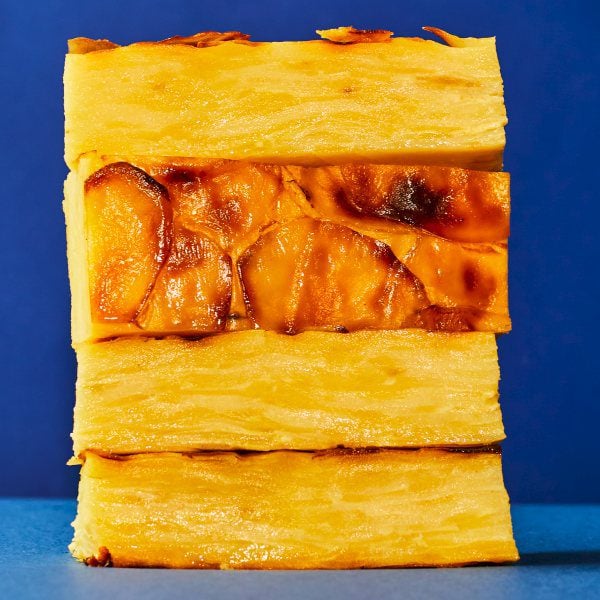
To press the dauphinois, you’ll need a second baking dish that’s the same size (or very slightly smaller). Put a sheet of baking paper on top of the golden dauphinois, sit the second dish on top then fill it with lots of heavy things – hardback cookbooks, tins of beans and chopped tomatoes are my go-to. This short resting and pressing time will reward you with a dense dauphinois that can be cut into neat bricks with incredible layers, rather than the overly creamy, sloppy ones you have to serve with a spoon.
Ready to make the dish? Find my best of the best dauphinois recipe here.
Subscribe to our magazine
Food stories, skills and tested recipes, straight to your door... Enjoy 5 issues for just £5 with our special introductory offer.
Subscribe
Unleash your inner chef
Looking for inspiration? Receive the latest recipes with our newsletter
